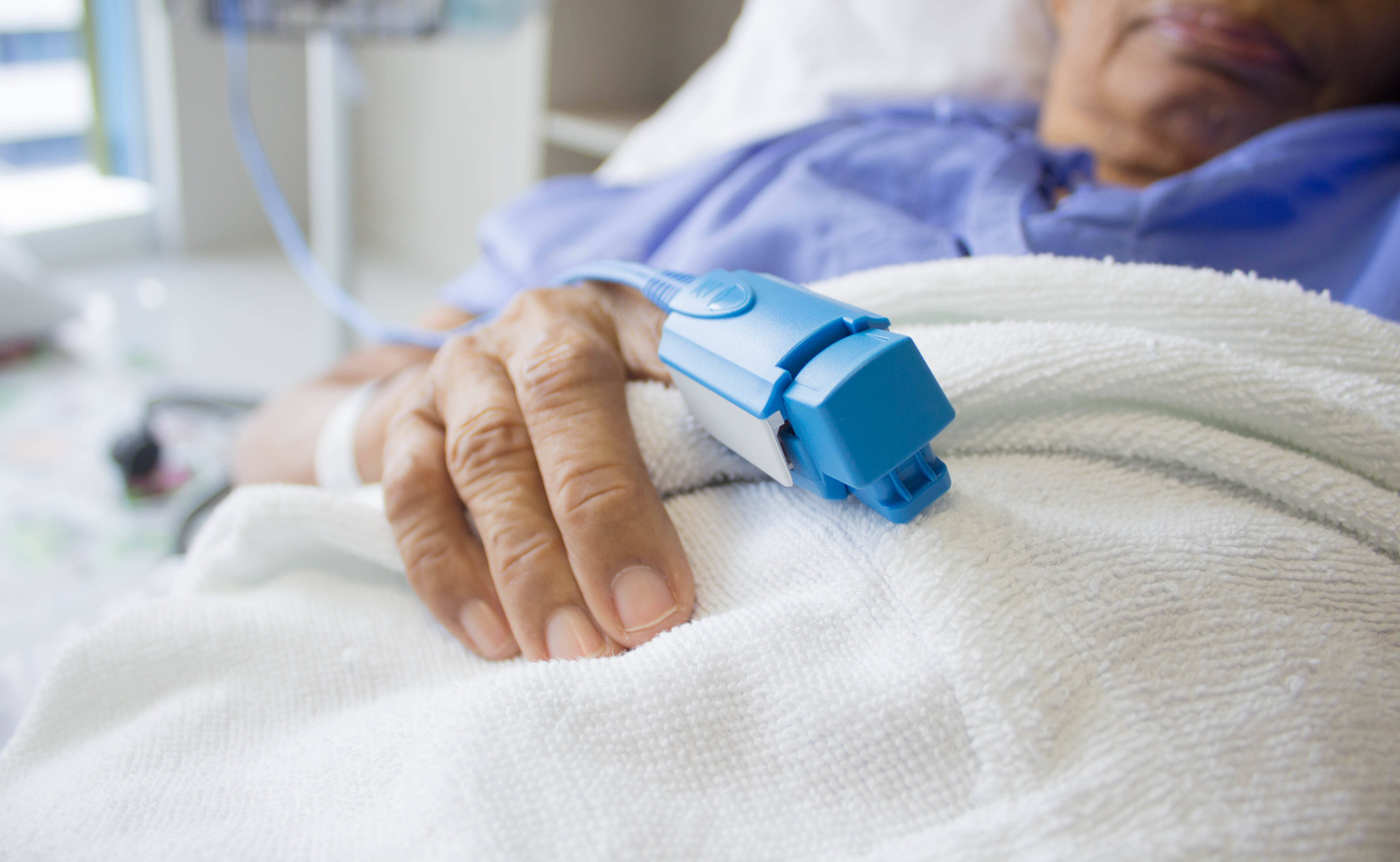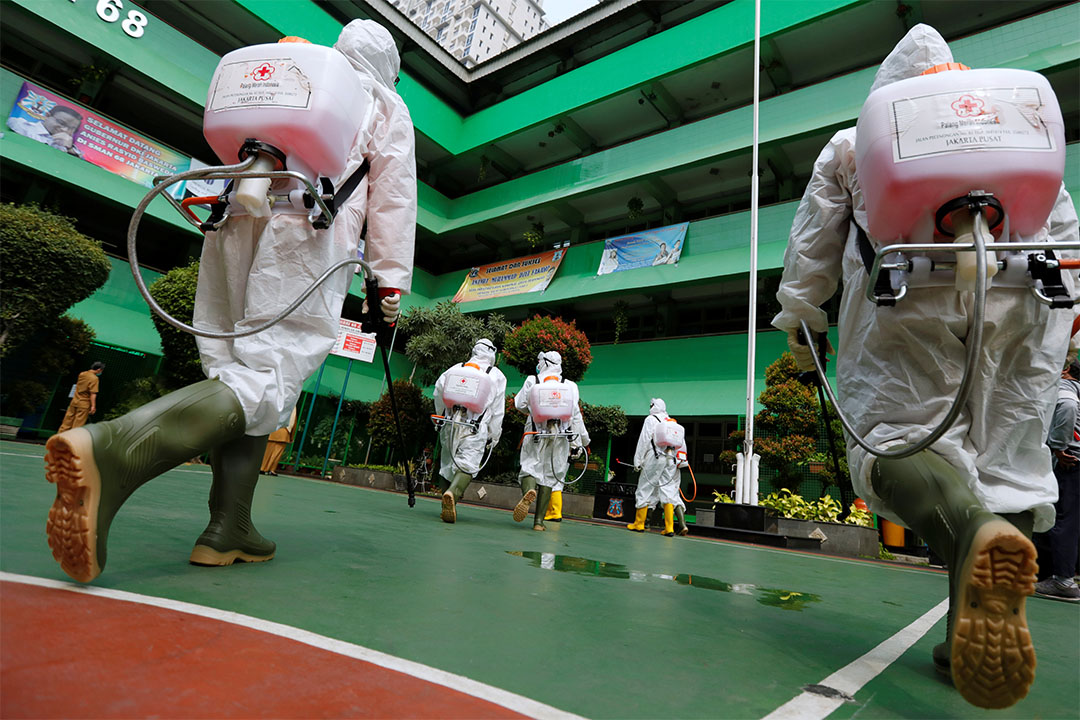
Among the many surprises of the new coronavirus is one that seems to defy basic biology: infected patients with extraordinarily low blood-oxygen levels, or hypoxia, scrolling on their phones, chatting with doctors, and generally describing themselves as comfortable. Clinicians call them happy hypoxics.
“There is a mismatch [between] what we see on the monitor and what the patient looks like in front of us,” says Reuben Strayer, an emergency physician at Maimonides Medical Center in New York City. Speaking from home while recovering from COVID-19 himself, Strayer says he was first struck by the phenomenon in March as patients streamed into his emergency room. He and other doctors are keen to understand this hypoxia, and when and how to treat it.
A normal blood-oxygen saturation is at least 95%. In most lung diseases, such as pneumonia, falling saturations accompany other changes, including stiff or fluid-filled lungs, or rising levels of carbon dioxide because the lungs can’t expel it efficiently. It’s these features that leave us feeling short of breath—not, counterintuitively, low oxygen saturation itself, says Paul Davenport, a respiratory physiologist at the University of Florida. “The brain is tuned to monitoring the carbon dioxide with various sensors,” Davenport explains. “We don’t sense our oxygen levels.”
In serious cases of COVID-19, patients struggle to breathe with damaged lungs, but early in the disease, low saturation isn’t always coupled with obvious respiratory difficulties. Carbon dioxide levels can be normal and breathing deeply is comfortable—“the lung is inflating so they feel OK,” says Elnara Marcia Negri, a pulmonologist at Hospital Sírio-Libanês in São Paulo. But oxygen saturation, measured by a device clipped to a finger and in many cases confirmed with blood tests, can be in the 70s, 60s, or 50s. Or even lower. Although mountain climbers can have similar readings, here the slide downward, some doctors believe, is potentially “ominous,” says Nicholas Caputo, an emergency physician at New York City Health + Hospitals/Lincoln.
Hypotheses about what causes it are emerging. Many doctors now recognize clotting as a major feature of severe COVID-19. Negri thinks subtle clotting might begin early in the lungs, perhaps thanks to an inflammatory reaction in their fine web of blood vessels, which could set off a cascade of proteins that prompts blood to clot and prevents it from getting properly oxygenated.
Negri developed this idea after treating a woman whose breathing troubles coincided with circulatory problems in her toes. Negri’s team gave the woman heparin, a common blood thinner, and not only her toes but her breathing recovered. Negri wondered whether heparin could boost patients’ low oxygen levels regardless of whether they were struggling to breathe. On 20 April, she posted a preprint detailing her hospital’s experience with 27 COVID-19 patients. Patients with hypoxia received heparin, and the dose was increased if they had elevated levels of D-dimer, a blood marker of excess clotting.
One of the 27 was lost to follow-up after transferring to another hospital. But 24 others are recovering—including six of eight who needed mechanical ventilation, a better rate of positive outcomes than has been reported elsewhere. Two remain critically ill. Negri is now planning to follow more patients. And several clinical trials elsewhere will test whether blood thinners can prevent or treat complications of severe COVID-19, including respiratory problems.
Strayer finds it reasonable to imagine that hypoxia emerges because “small blood vessels of the lung are being showered with clots.” His own hospital and others are beginning to test many admitted COVID-19 patients for markers of excess clotting and treat those who show it with blood thinners. But, “It is simply not known” whether clotting causes happy hypoxia, Strayer says. There are other possibilities. Recent imaging of a hypoxic patient showed “almost waxy-looking film all around the lungs,” Caputo says. “I don’t know what is actually going on pathophysiologically down there.”
Caputo says this hypoxia is likely stressing a body already straining to battle the virus. What to do about it is prompting debate. An emerging view is that doctors should avoid aggressive treatment they’ve been trained to offer in other settings. Luciano Gattinoni, a guest professor in intensive care at the University of Göttingen Medical Center, is wary of what he calls a “Pavlovian response” to COVID-19 hypoxia, in which doctors may swoop in to inflate lungs with ventilators or high-pressure oxygen even when patients seem comfortable. Those measures, Gattinoni wrote 24 April online in JAMA, could harm lungs that are inflating on their own but may be needed if patients aren’t helped by noninvasive treatment.
Simpler interventions, he and others say, are important. Strayer, Caputo, and their collaborator Richard Levitan, a physician at Littleton Regional Healthcare in New Hampshire, who spent time treating COVID-19 patients in a New York City emergency room, offered patients supplemental oxygen and also flipped them on their belly, an approach traditionally used for people on ventilators, which can open the lower lungs. This month in Academic Emergency Medicine, they reported that among 50 patients with low oxygen saturation, switching to a prone position raised average saturation significantly. However, 13 of the patients weren’t helped for long and needed intubation within 24 hours.
Doctors are uncertain about the value of detecting low oxygen saturation early using inexpensive devices called pulse oximeters at home. Is home monitoring “going to prevent all bad outcomes in COVID? Absolutely not,” says Levitan, who wrote a 20 April op-ed in The New York Times arguing that early hypoxia can rapidly progress to pneumonia and death. “If we were able to detect them when they were less sick, they’d do better.” Negri tells her patients to monitor their oxygen saturation and visit the hospital if it drops to 93% or below. At that point, she considers blood thinners and other therapy.
No one, however, has studied whether early detection of hypoxia might head off bad outcomes. Some physicians, including Gattinoni, believe pulse oximeters are best used with a doctor’s guidance, perhaps through telemedicine. With many COVID-19 patients frightened to visit a hospital and arriving only when their symptoms have dangerously advanced, doctors also wonder whether home monitoring could hasten treatment—and whether, for some, that could make all the difference.
COVID-19 Update: The connection between local and global issues–the Pulitzer Center's long standing mantra–has, sadly, never been more evident. We are uniquely positioned to serve the journalists, news media organizations, schools, and universities we partner with by continuing to advance our core mission: enabling great journalism and education about underreported and systemic issues that resonate now–and continue to have relevance in times ahead. We believe that this is a moment for decisive action. Learn more about the steps we are taking.










